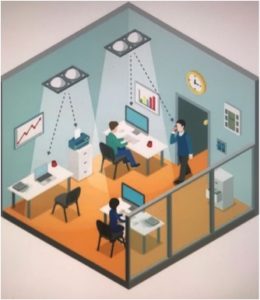Only 50 percent of the world is connected to the Internet. But more than 90 percent of the world population is connected to the public light infrastructure. LiFi makes it possible to turn every light bulb into a connection point to the Internet. That means that the other half of humanity can quickly—and cheaply—come online.
By GUNTER PAULI and JURRIAAN KAMP
In the past 25 years, the Internet has been a major driver of economic development. Societies have been transformed by the online services offered by Amazon, Google, Facebook, Alibaba, Tencent, and a long list of other, online giants. Whole industries—from hotels to taxis—are being overhauled by emerging Internet platforms. Mobile computers—cell phones—with geolocation (GPS) have added a new, online dimension in our daily lives. In short, connectivity is driving growth and progress, remaking society.
There is one challenge: while most people in the Western world speed along the Internet superhighway, half of the world still is not connected. Accessing the Internet requires an infrastructure of satellites, antennas, cables, wires, routers, and servers. These are expensive pieces of equipment that developing countries—struggling with improving the supply of drinking water, providing food security, and offering basic health, education, and infrastructure services—cannot afford. Poor people don’t have the cash available to buy subscriptions—or even prepaid cards—to get online access. They can’t pay for routers in their homes that cost at least 100 dollars per piece. As a result, we face a situation where half of humanity is engaged in a fast-developing, online, socio-economic expansion while the other half risks falling seriously behind. It is easy to understand what this means for global cohesion. The geopolitical consequences of this trend—from terrorism to migration—regularly make front page news, and the gap is only growing.
There are, however, glimmers of hope. When rice farmers in India are able to cut out the middlemen exploiting them and directly connect with the commodity exchange in Mumbai via a simple cell phone to know the real price on the market, the lives of their families will improve. And, yes, it does help when Facebook launches balloons over rural areas in developing countries to provide connectivity which, of course, includes the caveat that they must use Facebook or face the reality of not having a connection. Still, the impact of these steps pales in comparison with the ongoing explosion of online innovation in other parts of the world.
The bottleneck is the lack of adequate infrastructure. It is hard to see—even after a quarter of a century of Internet use and a decade of smart phones—how the unreached and isolated will catch up without major investments for which there is no money. This will change if the existing infrastructure can be used.
As we saw in chapter five, a major advantage of LiFi is that it can be introduced without a massive prior investment. While it is a fact that 50 percent of the world does not have an Internet infrastructure, 90 percent of the world does have a public light infrastructure. Even where there is no public light yet, it is on top of the development banks’ and governments’ agendas to provide light to local schools, health care centers, and stores. Through LiFi, we can quickly bring another 40 percent of humanity online using existing public light networks. If it only takes a LiFi-empowered light bulb and a solar panel to bring the rest of the world online, the remaining 10 percent does not need to remain behind for too long. We know that, at night, light creates a sense of security and belonging, and that connectivity changes the livelihoods of people, speeding up economic development, facilitating learning, and building resilience. This means that a cluster of public street lights, renewable energy, super-effective LEDs, and LiFi technology will make it possible to help close a dangerous socio-economic gap in our world.
The beauty of LiFi is that we can bring connectivity wherever there is light. This light can be a simple light bulb in the village square connected to an old-fashioned copper wire that distributes electricity to a dozen homes. The same wire can be used to carry information using 20-year old ADSL technology. The moment that light bulb is replaced with an LED lamp, the whole square can be connected. That means: better access to answers to medical problems, better education, and better opportunities for business and trade. Remember, there are already billions of street lights in the world!
The connection can be made with a simple, second-hand cell phone or computer, and there is no need to buy any cellular services from the multinational providers that make easy money by providing service in developing countries. The free light of the street will replace the expensive subscription to a cellular company and provide a faster, better connection. It is clear that this local street light with LiFi will only connect with the world if it can pick up an antenna, a cable, or a satellite. Often, this is not yet the case. While the system would not currently offer the chance to surf the world, it will offer an introduction to the world through an intranet. The locals can come to a quick agreement as to what information should be available and what must be shared, and this could be posted on a local service so that everyone will have the opportunity to consult.
There is another important dimension: LiFi makes it possible to determine—once again, from the start—which information will be shared and with whom. The World Wide Web grew without a plan, led by the unlimited protection of the freedom of speech. As a result, an estimated 30 percent of today’s Internet consists of porn. It is hard to see how that “freedom” serves the common good in society. How would we open up villages and communities to the World Wide Web and provide this kind of accessibility? Most governments that strive to protect the common good do not agree to the simple definition of freedom of speech that has been imposed by a few corporations within the North American legal framework, and they wish to have an additional layer of protection, especially for those who have not previously been exposed.
We are facing the challenge that the Internet as we know it today, through a misplaced focus on the freedom of speech and the emerging phenomenon of fake news, is creating a world that does not match with our reality. Moreover, that reality does not respect the cultural diversity and visions of a healthy, happy, and sustainable future.
It is against this background that the lack of connectivity for half of the world is perhaps a blessing in disguise, as it provides the opportunity to design an Internet strategy and a service portfolio that is a true response to the public’s needs.
A few concrete examples might be enough to inspire people to take the initiative to create new businesses based on information that can be easily shared. Instead of pushing for synthetic shampoos and detergents in glittery packaging, anyone interested can learn how to take a kilo of citrus fruit peels, add a liter of water and seven spoons of sugar, and create their own effective and fresh-smelling cleaning products. This information, kept on-hand in each village, could save the skin of millions, the water in the rivers, and avoid the dispersal of waste into the environment littering the place for decades to come.
Similarly, information can be shared about how waste from discarded fruits, vegetables, coffee, and tea can be used to farm mushrooms, providing healthy food while the substrate becomes the ideal feed for chickens; or how the roof of a house or a school could be the ideal spot to farm spirulina, a highly-nutritious algae that needs only sun and warm water to grow. The local production of this would provide all of the trace minerals the children need to grow up healthy. It makes sense that this information would be widely shared. This is what real society is about. This is how we can inspire people to keep cash in the local economy and spur development.
The lists of tested opportunities that have succeeded in other parts of the world and can be shared globally are endless. The new, online network will provide a discovery tour to help develop local economies. Even the installation of the network itself through LiFi-enabled, solar-powered LED street lights, could be explained in detail. And LiFi will grow faster, serving the common good and underpinning local growth with local entrepreneurship.
LiFi could be distributed over light networks which are owned mostly by governments elected to serve the common good. This new information network can function completely separately from the World Wide Web, and as we shall see in chapter 10, out of the reach of Google, Facebook, and their hackers, as well. A local server with all relevant information stored on it will secure accessibility of data that is important to enhance the resilience of the community and the quality of life within it. At the same time, it will assist in learning how to operate and to create a culture of connectivity in phases. This provides a unique opportunity for re-thinking the online information infrastructure we want to create.
We envision that local rural schools and community health centers are the first to connect the surrounding community to an “intranet” providing and exchanging information. This connection will change the way children learn while their parents can benefit from the access to information. Classrooms and homes can be connected to provide a sense of community and better safety. We already know what a simple light bulb powered by a solar panel can do in a village where there was previously no light available after sunset. More reading and more information means more change and better progress. Now, the LED lamp with sun-powered LiFi or the local electricity network can also bring, step-by-step, a connection to the wider world. Information and learning are the beginnings of new possibilities and new habits that can improve and enrich lives. Better ideas as to how to cook food or filter drinking water can travel faster and reach more people, solving more problems. LiFi connectivity can change the world and close the gap. This may very well be the most important contribution of this new technology.
This is an excerpt from LiFi: Communication at the speed of light and the emergence of the Internet of people
Published from Kamp Solutions magazine. More information: https://www.kamp.solutions/


